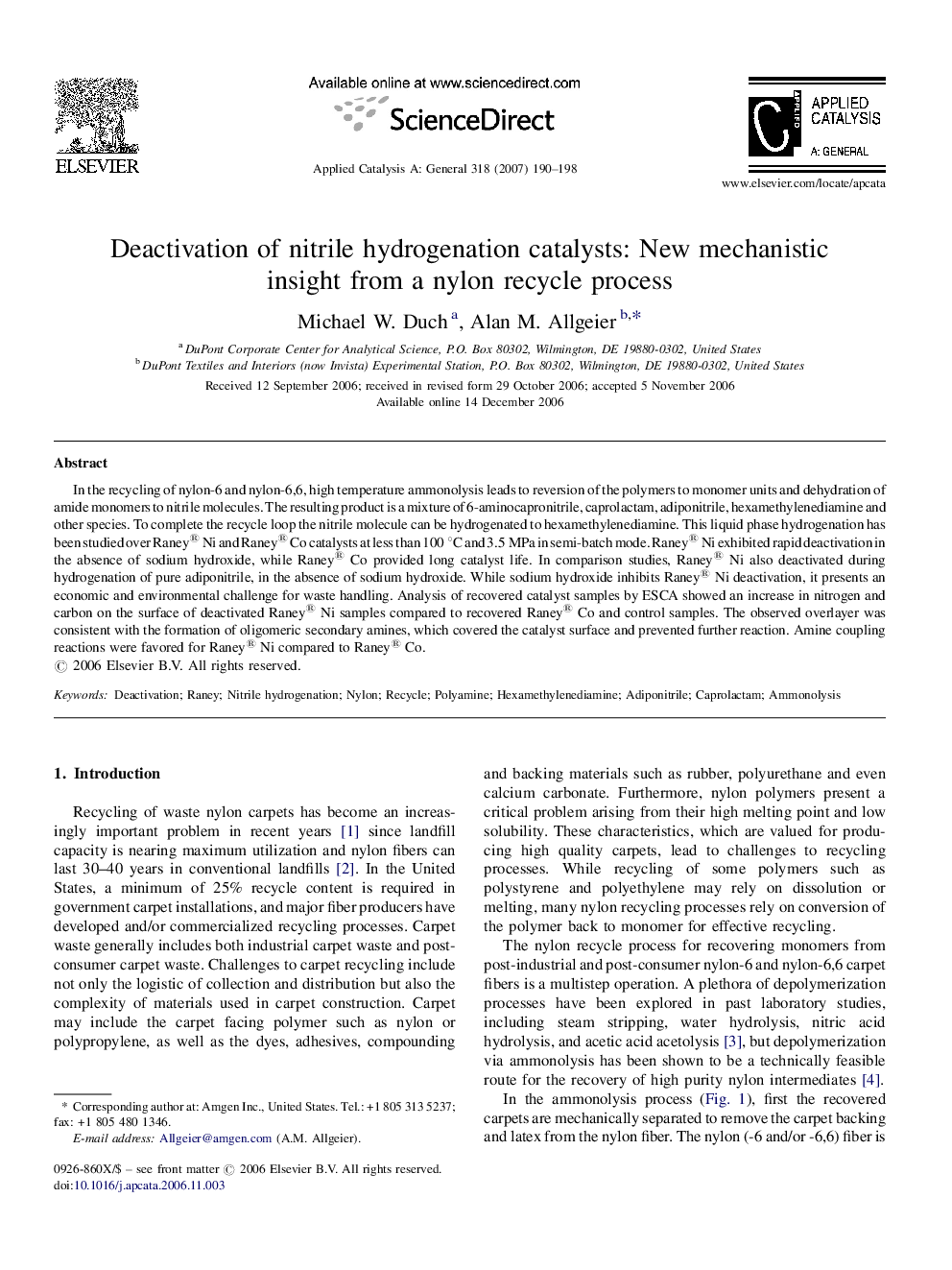| Article ID | Journal | Published Year | Pages | File Type |
|---|---|---|---|---|
| 44082 | Applied Catalysis A: General | 2007 | 9 Pages |
In the recycling of nylon-6 and nylon-6,6, high temperature ammonolysis leads to reversion of the polymers to monomer units and dehydration of amide monomers to nitrile molecules. The resulting product is a mixture of 6-aminocapronitrile, caprolactam, adiponitrile, hexamethylenediamine and other species. To complete the recycle loop the nitrile molecule can be hydrogenated to hexamethylenediamine. This liquid phase hydrogenation has been studied over Raney® Ni and Raney® Co catalysts at less than 100 °C and 3.5 MPa in semi-batch mode. Raney® Ni exhibited rapid deactivation in the absence of sodium hydroxide, while Raney® Co provided long catalyst life. In comparison studies, Raney® Ni also deactivated during hydrogenation of pure adiponitrile, in the absence of sodium hydroxide. While sodium hydroxide inhibits Raney® Ni deactivation, it presents an economic and environmental challenge for waste handling. Analysis of recovered catalyst samples by ESCA showed an increase in nitrogen and carbon on the surface of deactivated Raney® Ni samples compared to recovered Raney® Co and control samples. The observed overlayer was consistent with the formation of oligomeric secondary amines, which covered the catalyst surface and prevented further reaction. Amine coupling reactions were favored for Raney® Ni compared to Raney® Co.
Graphical abstractIn the recycling of nylon polymer, ammonolysis and subsequent nitrile hydrogenation leads to reversion of polymers to monomer units. The use of certain Raney® catalysts in the hydrogenation step results in deactivation by a different mechanism than that previously reported for acetonitrile hydrogenation. The process and catalysts are characterized and improved reactivity for Raney® Co over Raney® Ni is documented. Figure optionsDownload full-size imageDownload as PowerPoint slide
